This pub is situated in Moseley village, virtually opposite St Mary’s Church. A local landmark for centuries, the church stands on land donated by Elizabeth of York, wife of King Henry VII.
Prints and text about The Elizabeth of York.
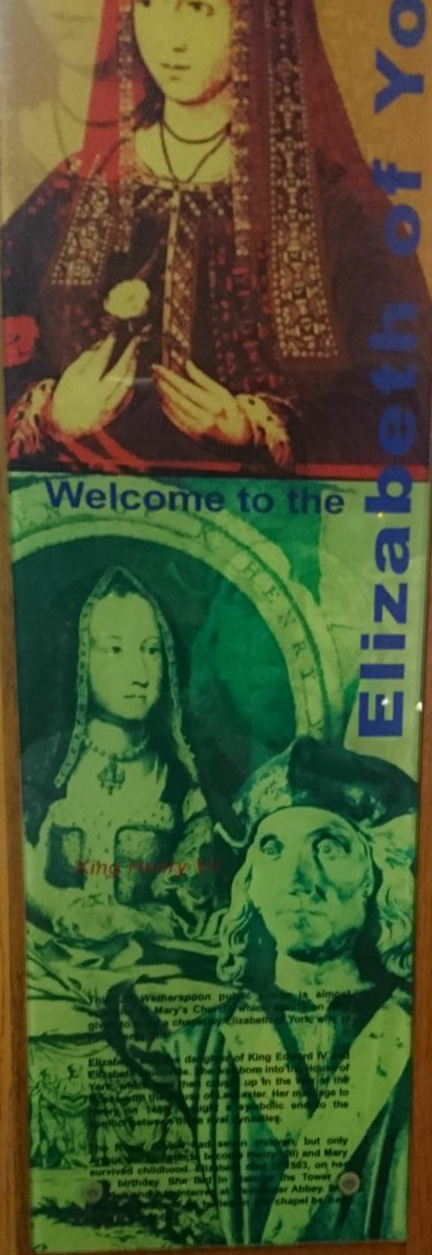
The text reads: This J D Wetherspoon pub is almost opposite St Mary’s Church which stands on land given to build a chapel by Elizabeth of York, wife of King Henry VII.
Elizabeth was the daughter of King Edward IV and Elizabeth Woodville. She was born into the House of York, which was then caught up in the War of the Roses with the House of Lancaster. Her marriage to Henry, in 1486, brought a symbolic end to the conflict between these rival dynasties.
The royal couple had seven children, but only Arthur, Henry (later to become Henry VIII) and Mary survived childhood. Elizabeth died in 1503. She laid in state at the Tower of London.
Prints and text about Moseley Hall.
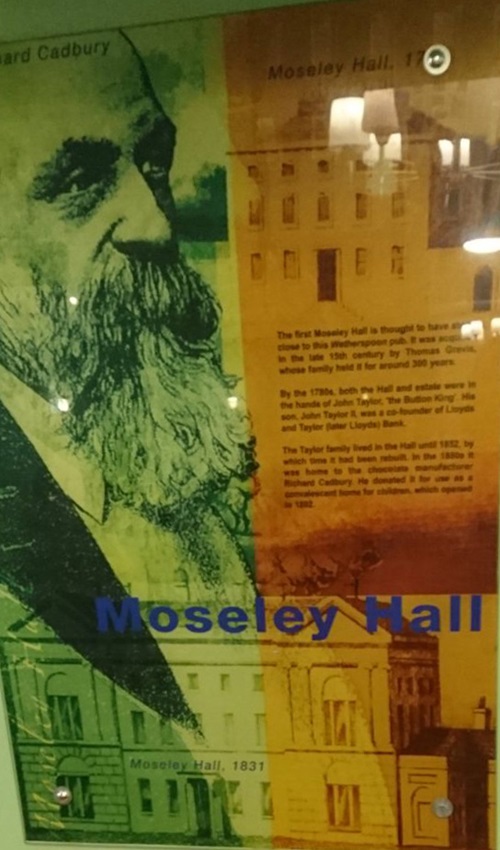
The text reads: The first Moseley Hall is thought to have stood close to this Wetherspoon pub. It was acquired in the late 15th century by Thomas Grevis, whose family held it for around 300 years.
By the 1780s, both the hall and estate were in the hands of John Taylor, ‘the Button King’. His son, John Taylor II, was a co-founder of Lloyds and Taylor (later Lloyds) Bank.
The Taylor family lived in the hall until 1852, by which time it had been rebuilt. In the 1880s it was home to the chocolate manufacturer Richard Cadbury. He donated it for use as a convalescent home for children, which opened in 1892.
Prints and text about Highbury Hall.
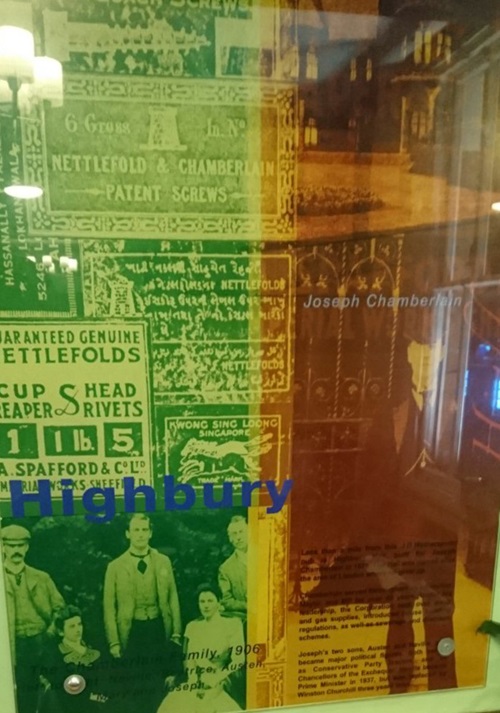
The text reads: Less than a mile away from this J D Wetherspoon pub is Highbury Hall, built for Joseph Chamberlain in 1878. The hall was named after the area of London where he grew up.
Chamberlain served Birmingham as councillor, mayor, and MP for over 40 years. Under his leadership, the corporation took over water and gas supplies, introduced house building regulations, as well as sewerage and drainage schemes.
Joseph’s two sons, Austen and Neville became major political figures. Both served as Conservative party leaders, and as chancellors of the exchequer. Neville became prime minister in 1937, but was replaced by Winston Churchill three years later.
Prints and text about working and entertainment in the area.
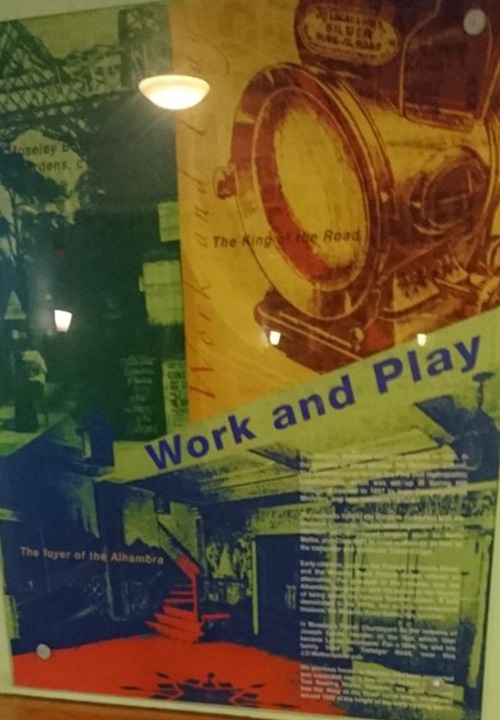
The text reads: The Moseley Botanical Gardens opened in 1890, in the grounds of what became the grammar school. The gardens stood next to the Pine Dell Hydropathic Establishment, which was set up in Spring Hill College. It opened in 1857 to train congregational ministers, and later moved to Oxford.
The concerts held in the gardens competed with the Harrison Concerts. These were organised by Percy Harrison and introduced singers such as Nellie Melba, and Clara Butt to local audiences as well as the composer and conductor Edward Elgar.
Early cinemas, such as the Triangle in Gooch Street, and the Moseley Road Picture House offered an alternative. The grandest of the cinemas was the Alhambra, designed to give the audience the illusion of being inside the famous Spanish palace. It was demolished in the 1970s, but another architectural treasure, the Moseley Road Baths, has survived.
In Moseley’s parish churchyard lies the remains of Joseph Lucas, founder of the firm which later became Lucas Aerospace. For a time, he and his family lived in Trafalgar Road, near this J D Wetherspoon pub.
His previous house in Hockley had been converted and expanded into a five storey factory and used by Tom Bowling Works. However, his great success was the King of the Road cycle lamp, introduced around 1880 at the height of the early cycling boom.
Plaques commemorating the famous local author JRR Tolkien.
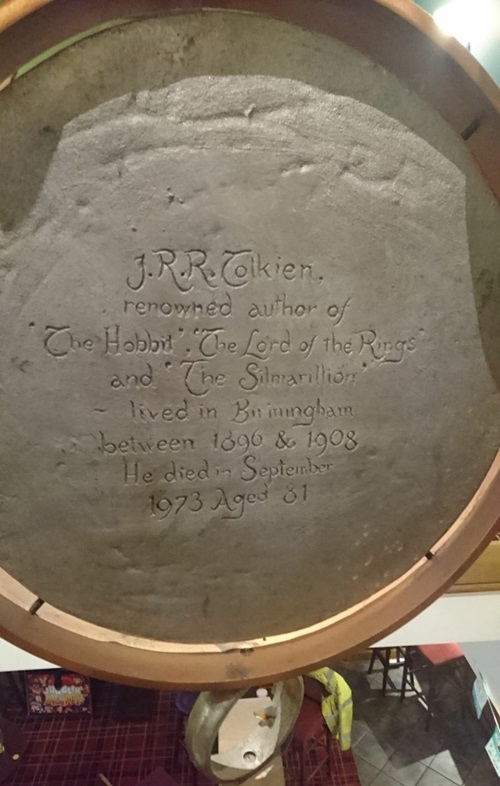
The plaques read: JRR Tolkien renowned author of The Hobbit, The Lord of the Rings and The Silmarillion, lived in Birmingham between 1896 and 1908. He died in September 1973, aged 81.
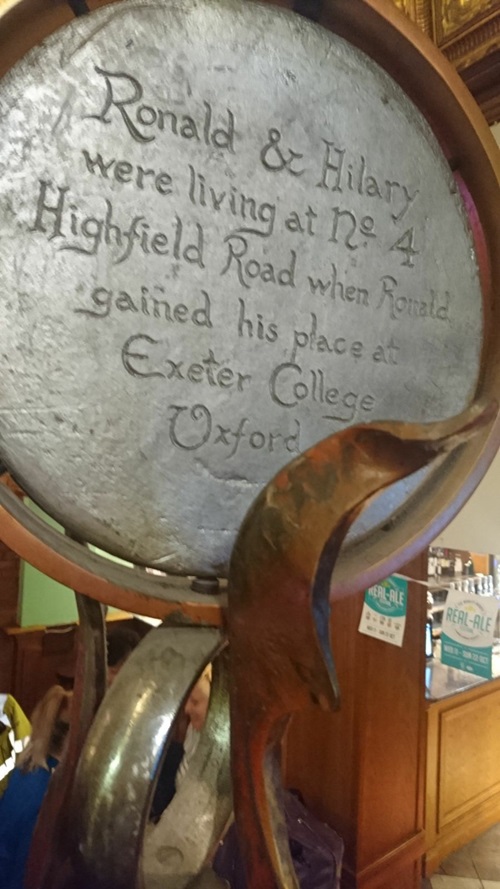
Ronald Tolkien and his younger brother Hilary, aged 9 and 7, travelled daily by tram from Moseley to school in Edgbaston.
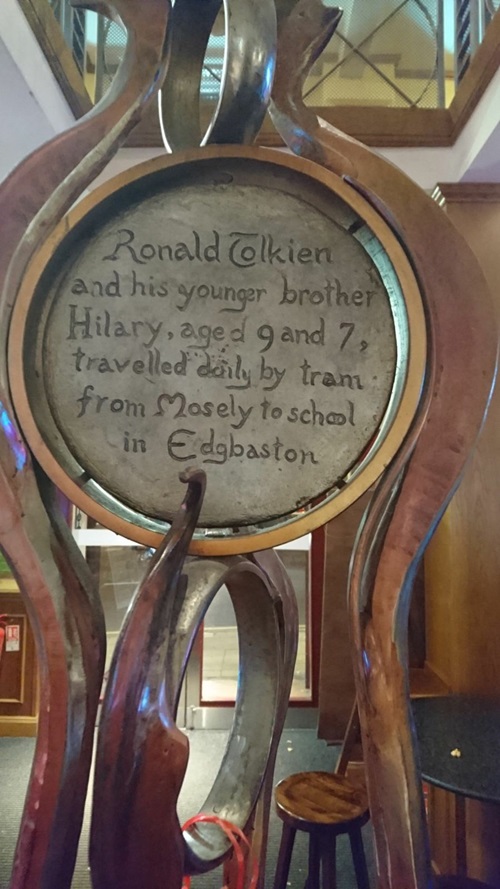
Ronald and Hilary were living at 124 Highfield Road when Ronald gained his place at Exeter College.
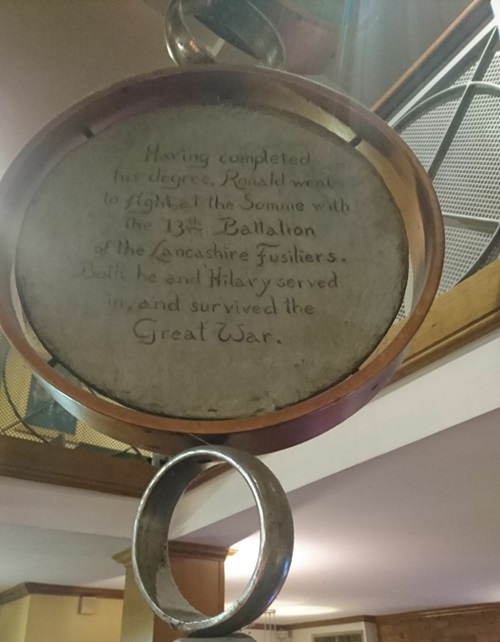
Having completed his degree, Ronald went to fight at the Somme with the 13th Battalion of the Lancashire Fusiliers. Both he and Hilary served in and survived the Great War.
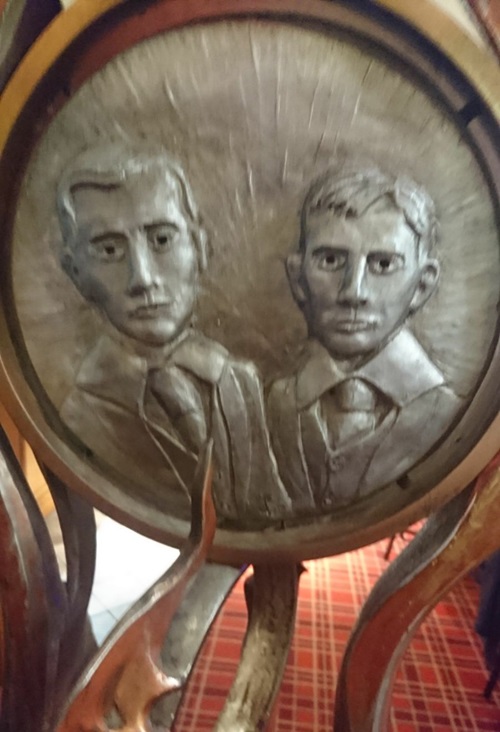
If you have information on the history of this pub, then we’d like you to share it with us. Please e-mail all information to: pubhistories@jdwetherspoon.co.uk